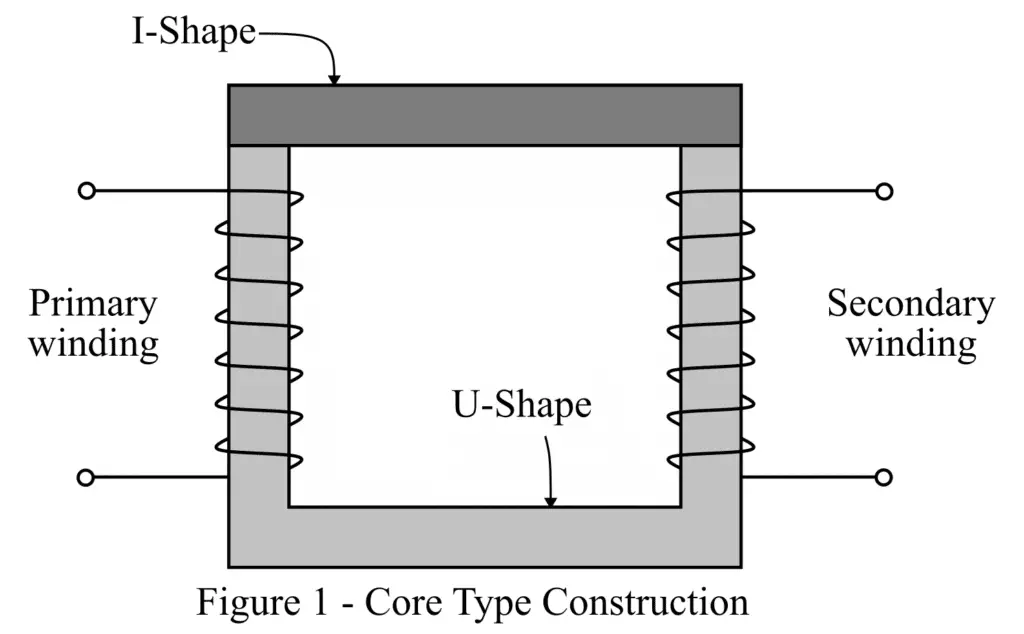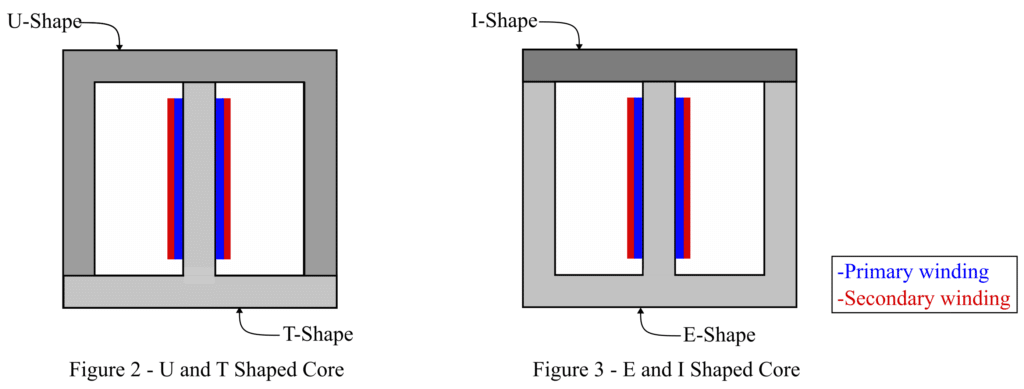In this article, we will discuss the definition, objective, construction, and losses of a transformer core. So let’s begin with the basic definition of the transformer core.
What is the Transformer Core?
A transformer core is an iron block that acts as a path for the flow of magnetic flux. Thus, the transformer core forms the magnetic circuit of the transformer. It is used to confine the magnetic flux to a definite path.
The transformer core acts as the housing for the primary and secondary windings of the transformer in addition to providing a path for the magnetic flux.
What is the Purpose of Transformer Core?
As we know, a transformer works on the principle of mutual inductance. According to this principle, the magnetic flux produced by one winding (primary winding) links to another winding (secondary winding) to produce a transformed voltage or current. These two windings are electrically isolated and magnetically coupled to each other.
It is also known that the opposition in the flow of magnetic flux is referred to as magnetic reluctance. Thus, in the case of a transformer, if the magnetic flux produced by the primary winding is made to pass through air or any other non-ferrous material to reach the secondary winding. It will cause a reduction in the amount of magnetic flux due to the high reluctance of air or non-ferrous material.
Hence, we need to provide a suitable mean between the primary and secondary windings of the transformer, so that the loss in the magnetic flux can be minimized. For this purpose, a magnetic core usually made up of high-grade silicon steel, is used. This magnetic core reduces the magnetic losses and conveys a relatively higher amount of magnetic flux from primary to secondary. This practice increases the overall efficiency of the transformer.
Construction of Transformer Core
The transformer core is made of thin sheet laminations of high-grade silicon steel. The sheet laminations are used to reduce the eddy current loss in the core. The silicon steel reduces the hysteresis loss in the core.
The following two types of transformer core constructions are used:
- Core-Type Construction
- Shell-Type Construction
Let us discuss each of these two types of transformer core constructions individually.
(1). Core-Type Construction of Transformer Core
In the core-type construction, the transformer core consists of two vertical limbs and two horizontal yokes. In this core construction, the primary winding is placed on one limb and the secondary winding on the other limb. When an input ac voltage is connected to the primary winding, a magnetic flux is established in the core. This flux travels to the secondary winding through the magnetic core.

In the core-type construction of the transformer core, the U and I-shaped laminations are used. Where the U-shaped laminations are first stacked together for the desired length. The primary and secondary windings are placed around the limbs. The core is then closed by the I-shaped lamination on the top as shown in figure-1.
(2). Shell-Type Construction of Transformer Core
In the shell-type construction of the transformer core, the three vertical limbs are provided along with the two horizontal sections. Both primary and secondary windings are placed on the central limb, while the two outer limbs act as the path for the flow of magnetic flux.

In case of the shell-type construction, there are two types of lamination shapes available:
- U and T Shaped Laminations – In these types of laminations, the central limb is constructed in the form of a T-shaped structure. The primary and secondary windings are placed on the central limb. The T-shaped structure is then closed by the U-shaped laminations at the top as shown in Figure 2.
- E and I Shaped Laminations – The shell-type transformer core can also be constructed using E and I-shaped laminations. In this type of core construction, the E-shaped laminations are stacked together. The primary and secondary windings are placed around the central limb. The core is then closed by I-shaped laminations on the top as shown in figure-3.
Transformer Core Losses
During the operation of the transformer, the transformer core is subjected to the alternating magnetic flux. This changing magnetic flux cause two types of iron losses in the core, which are:
- Hysteresis Loss
- Eddy Current Loss
Let’s discuss the hysteresis loss and eddy current loss that occurs in the core of the transformer in detail.
(1). Hysteresis Loss
The power loss that occurs in the transformer core due to magnetic reversal (or magnetic domain friction) is known as hysteresis loss. The hysteresis loss in a transformer core is determined using the following empirical formula.

Where η is the hysteresis coefficient, f is the frequency of alternating flux, Bm is the maximum flux density in the core, and V is the volume of the core.
The hysteresis loss in the transformer can be reduced by using a core of high permeability such as silicon steel.
(2). Eddy Current Loss
When the alternating magnetic flux links to the iron core of the transformer, an emf is induced due to electromagnetic induction in the core. This emf causes currents to circulate in the core of the transformer. These circulating currents are known as eddy currents, and cause power loss in the core due to the electrical resistance of the core material. The eddy current loss in a transformer is determined by using the following formula.

Where, Ke is the eddy current coefficient, and t is the thickness of each lamination of the core.
We can reduce the eddy current loss in the transformer core by using a laminated core instead of a solid iron core. The silicon content of the steel further reduces the eddy current loss by increasing the core resistance.
Hence, this is all about the transformer core, its construction, and its losses. The above discussion shows that the magnetic core is a significant part of the transformer that increases the machine’s efficiency.